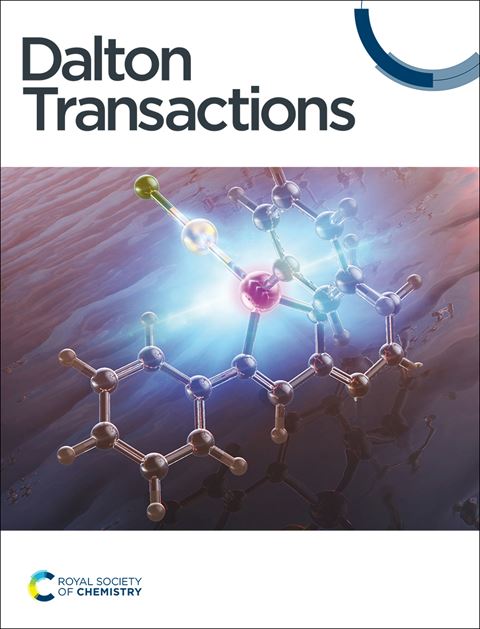Enhancing the hydrogen evolution activity of diiron molecular electrocatalyst by modulating substituent effect of carbon nanotubes
IF 3.5
3区 化学
Q2 CHEMISTRY, INORGANIC & NUCLEAR
引用次数: 0
Abstract
Designing molecular catalysts to enhance hydrogen evolution activity presents both great significance and challenges. In hydrogenases, the redox group (i.e., [4Fe4S] subcluster) near catalytic active center (i.e., [2Fe2S] subcluster) plays a crucial role in modulating the enzyme's activity. Inspired by this biological strategy, three carbon-nanotube-supported diiron dithiolato hybrids, which are labeled as CNT-X-ADT (X = N, C, O), were designed. The activity of diiron catalytic center was regulated through side chain substituents (i.e., substituent effects) of CNT. Notably, a bioinspired diiron molecular compound {(μ-SCH₂)₂N(CH₂CO₂C₆H₄CHO-p)}Fe₂(CO)₆ (1), which was used to mimic diiron catalytic active center of hydrogenase enzyme, was first synthesized and then covalently attached to carbon nanotubes to form three target hybrids CNT-X-ADT (X = N, C, O). The side chain substituents, designed to mimic the activity control group, were linked to CNTs through an amination reaction. Significantly, the hydrogen evolution reaction (HER) properties of the CNT-X-ADT hybrids were systematically investigated and compared using various electrochemical techniques. Compared with CNT-C-ADT that lacks side chain regulatory ability, the average turnover frequency (TOFH₂) of CNT-N-ADT is nearly twice and gets 0.175 s⁻¹ after 5-h electrolysis, and the corresponding turnover number (TONH₂) for H₂ generation reaches 3.1 x 10³. In contrast, the CNT-O-ADT hybrid, due to its electron-withdrawing alkoxy side chain, reduces the electron density of the catalytic center, resulting in the poorest HER performance. Overall, this activity modulation by different side-chain substituents holds great significance for the development and design of metal molecular catalysts.求助全文
约1分钟内获得全文
求助全文
来源期刊

Dalton Transactions
化学-无机化学与核化学
CiteScore
6.60
自引率
7.50%
发文量
1832
审稿时长
1.5 months
期刊介绍:
Dalton Transactions is a journal for all areas of inorganic chemistry, which encompasses the organometallic, bioinorganic and materials chemistry of the elements, with applications including synthesis, catalysis, energy conversion/storage, electrical devices and medicine. Dalton Transactions welcomes high-quality, original submissions in all of these areas and more, where the advancement of knowledge in inorganic chemistry is significant.
 求助内容:
求助内容: 应助结果提醒方式:
应助结果提醒方式:


